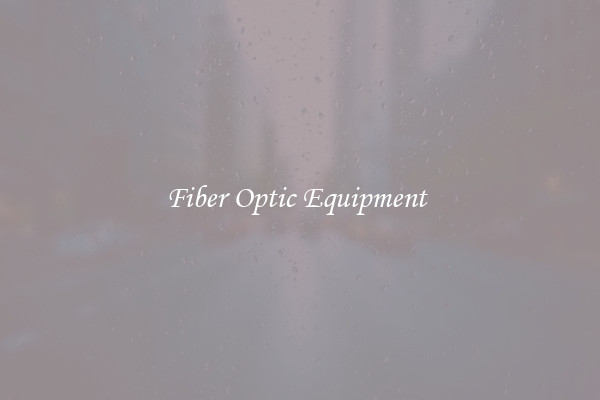Fiber Optic Equipment
Fiber Optic Equipment: Revolutionizing Communication Technology

In today's fast-paced world, communication plays a vital role in connecting people and businesses across the globe. With the constant need for faster and more reliable communication networks, fiber optic technology has emerged as a game-changer. Fiber optic equipment has revolutionized the way information is transmitted, offering unparalleled advantages over traditional copper wire systems.
Fiber optic equipment consists of several essential components that make up the backbone of fiber optic networks. One such component is the fiber optic cable, which is incredibly thin, lightweight, and flexible. These cables are made of glass or plastic fibers, which have the ability to carry large amounts of information in the form of light pulses. Unlike traditional copper cables, fiber optics allows for much faster data transmission speeds, with virtually no loss of signal strength over long distances.
To process and manage the data transmitted through fiber optic cables, various supporting equipment is required. Optical transceivers, for example, are crucial in converting electrical signals into light signals and vice versa. These transceivers enable the transmission and reception of data through fiber optic cables, ensuring seamless communication between devices. They come in various formats, such as SFP, SFP+, QSFP, and XFP, catering to different network requirements.
Another crucial component of fiber optic equipment is the optical switch. Optical switches are designed to manage the flow of data across multiple fiber optic connections. Through their advanced technology, these switches can direct incoming data packets to specific output ports, ensuring efficient and secure data transmission within a network. Optical switches are commonly used in data centers, telecommunications networks, and government organizations to handle massive amounts of data with minimal delay.
Moreover, fiber optic equipment also includes connectors, patch panels, and couplers. Connectors are used to join fiber optic cables together, ensuring a secure and reliable connection. Patch panels, on the other hand, provide a centralized location for connecting multiple fiber optic cables, making it easier to manage and organize network connections. Couplers are essential for splitting or combining fiber optic signals, allowing for greater flexibility in network configurations.
The adoption of fiber optic equipment has significantly transformed the telecommunications industry. Its ability to offer high-speed and high-bandwidth connections has paved the way for the development of advanced applications, such as video streaming, cloud computing, and virtual reality. Furthermore, fiber optics has revolutionized industries like healthcare, finance, education, and entertainment, enabling seamless communication, data storage, and collaboration.
In conclusion, fiber optic equipment has brought about a substantial shift in communication technology. By leveraging light signals instead of electrical signals, fiber optics offers faster, more reliable, and secure data transmission. As businesses and individuals increasingly rely on the internet for various activities, the demand for fiber optic equipment will continue to surge, driving further innovations in the field. The future of communication is undoubtedly illuminated by fiber optics.

View details

View details

View details

View details








